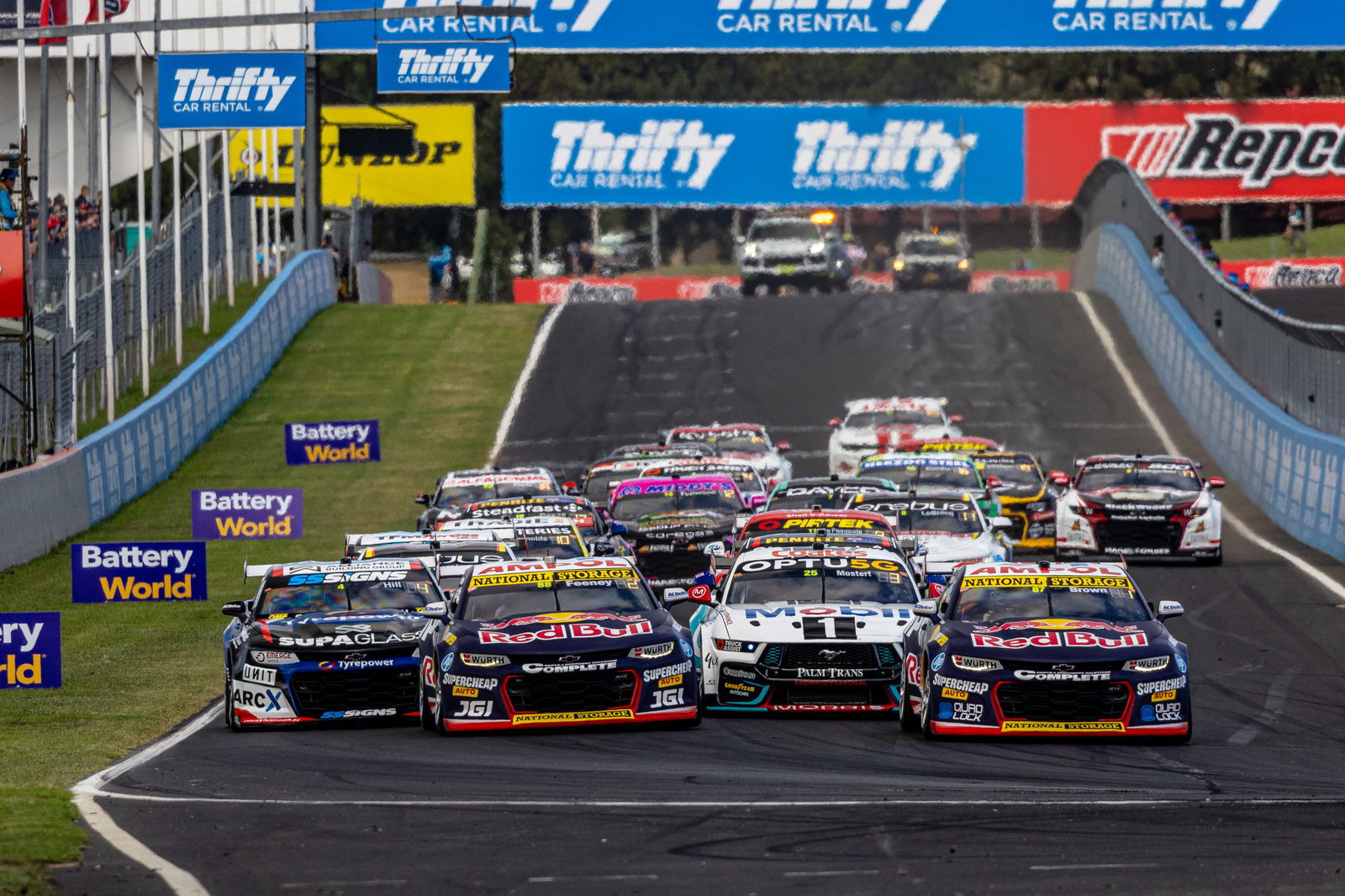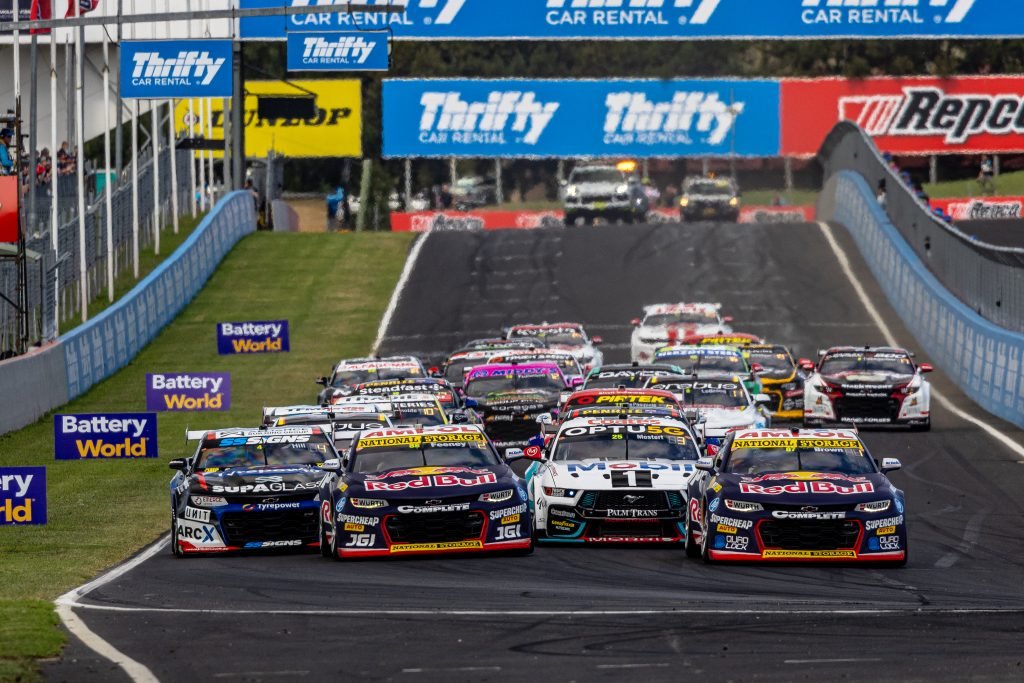

Speedcafe understands that the category’s Motorsport department has selected one engine from each of Chevrolet teams Triple Eight Race Engineering and Matt Stone Racing, and each of Ford teams Walkinshaw Andretti United and Dick Johnson Racing.
Both Triple Eight cars and WAU’s #25 Mobil 1 Optus Mustang of Chaz Mostert were the only entries to figure on the podium at the Mount Panorama season-opener.
However, rather than being motivated wholly by scrutineering, the exercise is another example of Supercars’ move to introduce greater rigour to its parity assessment processes.
The units will be dynamometer tested at category engine expert Craig Hasted’s facility in South East Queensland, in a time of heightened focus on the question of engine parity.
Being the first event of 2024, the Bathurst 500 was the first time cars had raced since historic off-season wind tunnel testing, which appears to have finally put conjecture over aerodynamic parity to rest.
Engine parity, though, is a work in progress.
Dick Johnson Racing is continuing on a programme to address weaknesses in the motor which powers the Ford Mustangs, and Team Principal Ryan Story expressed a level of pessimism about its competitiveness before action kicked off at the Bathurst 500.
That looked to have been vindicated when the Camaros were consistently quicker in the speed trap for most of the weekend, a point noted by Mostert after he finished third in Race 1.
To draw a direct correlation, though, between trap speed and engine performance would be unwise given the presence of statistical noise.
Indeed, Mostert illustrates the point in so much that his car was not only consistently slower than the Camaros down Conrod Straight, but also the other Mustangs.
On the other hand, he was rapid all weekend in Sector 2, which takes in the winding section across the top of Mount Panorama, suggesting car set-up was a major factor in his straight-line speed.
In fact, on Lap 6 of Race 2, he and Triple Eight’s Will Brown, who were first and second respectively at that point (at just under one second apart), set exactly the same lap time; 2:09.1573s.
Mostert, though, was a massive 0.5118s faster in Sector 2 than Brown, then gave up 0.4008s in Sector 3.
Ford Performance Motorsports Global Director Mark Rushbrook, who attended the Bathurst 500, told media including Speedcafe ahead of Race 2 that “We don’t want to jump to conclusions from the data that we’ve seen so far.”
Rushbrook agreed that aerodynamic parity has been achieved but has long been a proponent of transient dynamometer testing for the engines.
That is an initiative to which Supercars has committed, albeit at a date as yet unconfirmed but most likely in the second quarter of this year.
Supercars General Manager of Motorsport, Tim Edwards, has also committed the category to “a big, long list of … sensors that we’re going to roll out during the year to capture a lot more information,” in order to add rigour to technical parity monitoring.





















Discussion about this post